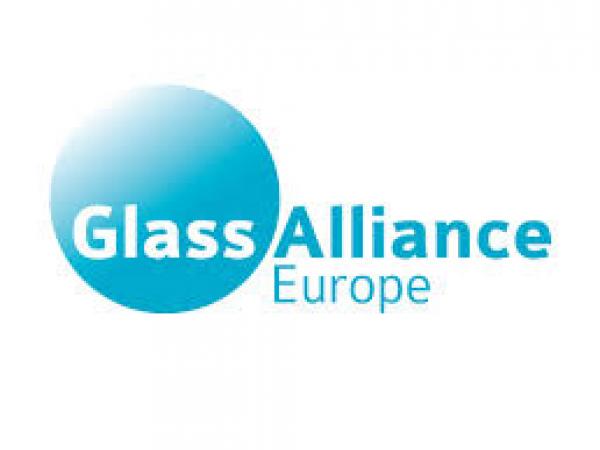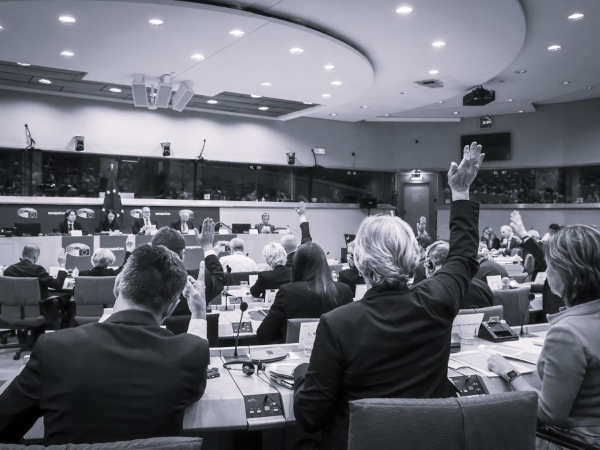
Date: 15 June 2016
It has naturally contributed to establishing Europe’s leading position in glass production. Whether for packaging solutions, architecture, automobiles, tableware, insulation and other technological applications, glass is a critical material for sustainable development, health and well-being.
Employing over 180,000 people, the European glass industry is committed to achieving the highest health and safety standards for workers, and has therefore systematically implemented risk reduction measures (RRM) and best practices, based on risk assessment. A rigorous and responsible approach has led to a reduction of workers’ exposure to Respirable Crystalline Silica (RCS). The potential workers’ exposure is restricted to limited workplaces (batch and melting areas) and affects a proportion below 10%1 of the total workforce in the glass industries (see Annex 1 on exposure of workers to RCS in the Glass Industries).
Glass Alliance Europe understands that the European Commission is seeking to extend workers’ protection via a revision of the annexes of the Carcinogens & Mutagens Directive (CMD) by adding a number of substance and processes, among them RCS processes.
In order to deliver a legislative framework that ensures a harmonised implementation of proportionate and effective risk reduction measures for its workers, Glass Alliance Europe is keen to contribute to an adequate legislative framework which protects against the effective risk of workers’ exposure, ensures a safe exposure level and is workable in practice.
To this end, Glass Alliance Europe would like to raise the following points for consideration, should the Commission pursue its intention to regulate RCS under the CMD.
About Glass Alliance Europe
Europe is the world leader in glass making. The glass industry comprises more than 500 plants providing 500,000 direct and indirect jobs. Glass is a unique and inert material made from abundant natural resources and fully recyclable. It is a key contributor to the EU objectives of a low-carbon, energy efficient and circular economy, and a key enabling material for essential supply chains, such as the pharmaceutical and health sector, the food and drink industry, buildings and construction, automotive, luxury goods and perfumes, electronics, etc.
For more information http://www.glassallianceeurope.eu/
1. A proper definition of “RCS processes” needs to be developed
The scope of the legislative framework needs to be clear and unequivocal to effectively cover the work processes involving occupational exposure to RCS presenting an effective risk. A general approach to ‘RCS processes’, by giving rise to different interpretations, would not focus on the actual risk and would lead to patchy implementation across Member States as well as miss the target of ensuring appropriate protection of workers’ health.
It is therefore a priority to have a definition clearly identifying such processes to be included in Annex I (List of substances, preparations and processes) of the CMD.
For this purpose, Glass Alliance Europe proposes the following definition of ‘RCS processes’:
“work processes involving occupational exposure to respirable crystalline silica in the form of freshly fractured particles generated through dry processes such as dry cutting, grinding, drilling, crushing, sand and abrasive blasting operations”.
The approach to “freshly fractured particles” refers to the evidence that processes of instantaneous particle generation (real time generation) are associated to the actual risk.
The relation between freshly fractured particles and its primary human health effect, silicosis (potential precursor to cancer), is well accepted within the scientific community and is supported by diverse scientific and literature evidence (see annex II). The processes listed in the above definition are those which have been identified as potentially giving rise to a silicosis risk.
2. An appropriate level of protection to RCS exposure needs to be established
A European Binding Limit Value should be set at 0.1mg/m3 (8hr TWA) for RCS process in Annex III (A) (Limit values and other directly related provisions) of CMD. Such a value reflects, the outcome of socio-economic assessments, existing realities and the opinion of the European Commission’s Advisory Committee for Safety and Health at Work2. In particular:
The results presented by the IOM SHEcan report to the European Commission also lead to the conclusion that an OEL of 0.1 mg/m3 demonstrates the best economic impact/health benefit ratio.
The benefit of any European OEL for RCS will only be obtained if the limit value is scrupulously implemented. The OEL of 0.1 mg/m³ is achievable in terms of compliance and today’s measurement techniques.
3. Risk Reduction Measures (RRM) safeguarding worker’s protection, along those established in the Social Dialogue Agreement, should be recognised
In order to ensure the successful implementation of the CMD revision, a coordinated approach among MS should be promoted. Glass Alliance Europe believes that the recognition of risk reduction measures by way of a reference to Good Practices to control exposure to RCS would benefit the improvement of worker’s health protection
Glass Alliance Europe proposes to recognise the appropriateness of certain good practices:
- Via Annex III (B) – Other directly related provisions
Where good practices to control respirable crystalline silica as defined in Annex I are agreed through social dialogue pursuant to Article 153(3) or 155(2) of the Treaty, these should be applicable in addition to Annex III (A).
- Via a recital
Whereas risk reduction measures such as those specified in a Social Dialogue Agreement are an example of effective measures satisfying the requirement to reduce exposure as low as practically possible.
4. Providing the industry with an adequate and science-based legislative framework
While proposing concrete elements in the context of a potential inclusion of RCS processes in the CMD, Glass Alliance Europe believes that a proper evaluation of the legislative framework is needed. The European Commission proposal to amend the CMD should await the results of the SCOEL evaluation3 and its up-to-date scientific conclusions. It is indeed essential to remove the uncertainties relating to the scientific aspects, particularly with regard to
- the non substitutability of crystalline silica in glass manufacturing which should be recognised along the lines of what was done for the wood dust case.
- the secondary mechanism of observed health effects, which would imply the existence of a threshold level below which there is no risk for workers. The recognition of such a threshold would mean that the respect of the corresponding OEL would ensure adequate workers’ protection. Moreover, it would emphasise that the protection against silicosis guarantees the protection against cancer effects.
ANNEX 1 – Exposure of workers to RCS in the Glass Industries
Because of the nature of the glass processes and the widespread risk reduction measures in place, workers’ exposure in the glass industries is very limited and well controlled.
Raw materials which are used in the manufacture of glass, including crystalline silica, are transformed in the furnace into the new substance glass. Exposure to RCS is therefore no longer relevant once glass has been formed.
Glass industry on-site production processes potentially leading to exposure to RCS include only handling and mixing of raw materials and their conveyance to the glass furnace, where the melting process occurs.
Potential exposure to RCS is therefore limited to two specific areas of the factories, the ‘batch area’, where raw materials are mixed’ and the ‘melting area’ where raw materials are conveyed into the furnaces. The high degree of automation of the batch and melting areas in many factories means that the amount of time that workers spend in these areas is very limited and subject to appropriate risk reduction measures (such as controlled feeding systems, aspiration mechanism and personal protective equipment).
ANNEX 2 – Scientific evidence & bibliography
- Those processes are associated with acute silicosis, which acts as a precursor of lung cancer.
- Acute silicosis is typically associated with the generation of freshly fractured silica dust in these occupations: more cytotoxicity is caused in cells than with aged silica, probably because freshly fractured silica are more potent, notably due to surface formation of newly generated silicon-based radicals (NIOSH, OSHA Report 2010, Castranova et al., 1996).
- Freshly fractured particles occur in operations where crystalline silica is subject to high energy forces, as occurs in work processes such as abrasive blasting, rock drilling, tunneling, stone carving and the production of silica flour (OSHA Report 2010).
- Those processes generated dust of high surface reactivity (NIOSH).
- Standards developed for aged silica may not be adequate to protect workers exposed to freshly fractured silica. It is therefore useful to emphasize the more potent form in the definition.
***
1 NEPSI Reporting (years 2008-2014)
2 The Advisory Committee on Safety and Health at Work Opinion - Doc. 2011/12 - Opinion on the approach and content of an envisaged proposal by the Commission on the amendment of Directive 2004/37/EC on Carcinogens and Mutagens at the workplace, adopted on 05/12/2012.
3 The European Commission issued a new Mandate to the Scientific Committee for Occupational Exposure Limits (SCOEL) to update their evaluation on Respirable Crystalline Silica with a deadline by 31 December 2016.
 600450
600450








Add new comment